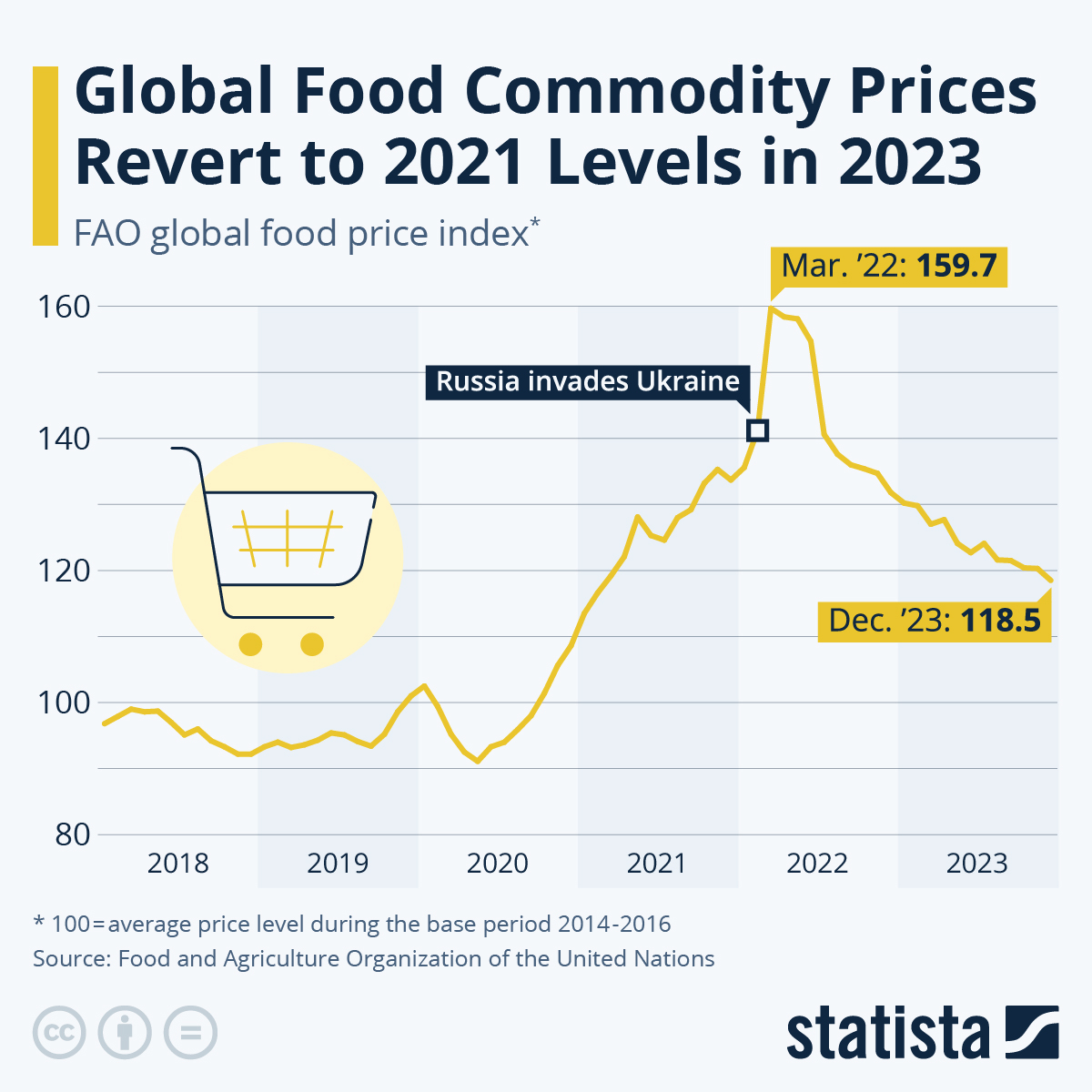After a steady decline that began last summer, global food prices ticked upward in March for the first time in seven months, according to the Food and Agriculture Organization (FAO) of the United Nations. The FAO's Food Price Index, a measure of the monthly change in international prices of a basket of commodities, rose 1.1% from February to March 2024, reaching 118.3 points.
However, despite this uptick, food prices remain 7.7% lower compared to March 2023. The increase was primarily driven by a surge in vegetable oil prices, which jumped 8% in March to reach a one-year high. This rise can be attributed to seasonal drops in output from leading palm oil producing nations coinciding with strong demand in Southeast Asia. Additionally, demand from the biofuel sector contributed to an increase in soy oil prices.
The FAO's report also highlights contrasting trends within the index. While vegetable oil prices rose, cereal prices, the largest component of the index, continued their downward trajectory, falling 2.6% in March. This decline is likely due to a combination of factors, including reduced demand for wheat from China and strong production from major producers like the European Union, Russia, and the United States.
Prices for other major food groups also exhibited a mixed bag of results. Dairy prices rose 2.9% in March, driven by strong global demand for cheese and butter. Meat prices also climbed slightly, with increases observed across poultry, pig, and bovine meat. Conversely, sugar prices dropped 5.4% in March.
The FAO's report comes amid ongoing concerns about global food security. While the overall food price index remains lower than last year, the recent increase in vegetable oil prices could have implications for food affordability, particularly in low-income countries that rely heavily on vegetable oils for cooking. The FAO emphasizes the need for close monitoring of food supply chains and continued efforts to bolster agricultural production in vulnerable regions.

